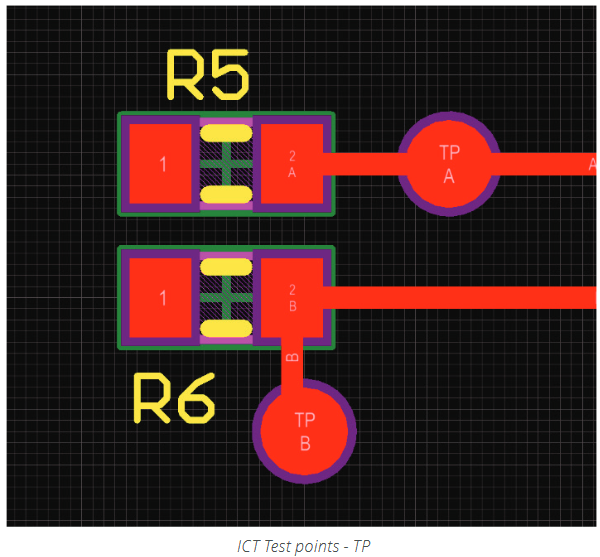While I have found a few resources (here here here) describing the coverage (strive for 100 %!), distribution (avoid clustering, at least 100 mil apart, away from tall components), and size (40 mil if you can) of test points designed for bed of nails in-circuit testing (ICT), I have not found guidance on the placement of them among traces.
I have seen some pretty ugly placement -- e.g. test points tangential to traces or halfway across the board from their signal's main trace -- but the two options I notice the most are directly inline with the trace or close by the trace/component and bridged with a short trace:
The former (TP-A above) makes the most sense to me while the latter (TP-B) looks to be a technique used among a high density of traces and test points (I'd also be more concerned with acid traps here, but it seems like modern manufacturing techniques aren't as vulnerable). Are there guidelines or best practices that relate here?

